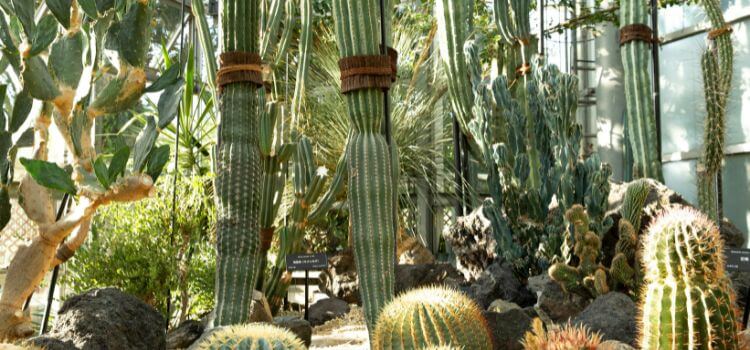As an Amazon Associate, I earn from qualifying purchases.
Do all cactus grow arms? Not all cacti develop arms; this feature is specific to certain species. For example, the well-known Saguaro cacti are famous for their arm-like growths.
Cacti are an incredibly diverse group of plants, and their structures vary widely across different species. While cactus arms are iconic, they’re familiar. The Saguaro, native to the Sonoran Desert, is perhaps the most recognizable cactus with arms, which it develops as it matures.
Many other cactus species develop as solitary columns without limbs, sprawling shrubs, or ground cover. With these modifications, cacti can adapt to the desert heat or mountainous fissures. Gardeners and plant lovers can choose cacti for their landscapes and interiors by knowing that not all produce arms.
Do All Cactus Grow Arms?
The allure of cacti’s arms extends far beyond their spiky surface. These arms, rising from the desert floor, capture the imagination. They contribute to the cactus’s unique shape and serve as a symbol of desert resilience.
The Iconic Saguaro
The saguaro cactus (Carnegiea gigantea) stands tall as a symbol of the American Southwest. With its towering arms, it creates a captivating sight against the sunset. Not all cacti grow arms, but the saguaro is famous for them. These arms rise once the cactus reaches 70, showcasing its longevity.
Significance In Desert Landscapes
Cactus arms are essential in desert landscapes. They provide homes for desert nature, and birds often nest in the crooks of cacti arms. These arms also store water, helping the plant survive in harsh conditions. Their growth patterns can indicate the health of the cactus and the ecosystem it supports.
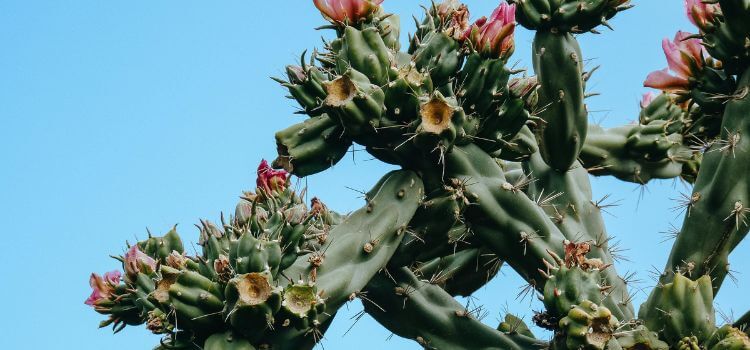
Varieties Of Cacti
The cactus family is diverse and wide-ranging, capturing the fascination of botanists and enthusiasts alike. With their uniquely adapted structures for arid environments, cacti come in vast sizes and shapes. Some cactus can develop limbs, adding to their dramatic desert image.
Armless Species
Many cacti species never grow arms. These are often spherical or columnar in their youth, maintaining a simple form as they mature. Popular armless species include:
- Astrophytum asterias – also known as the Star Cactus
- Echinocactus grusonii – widely recognized as the Golden Barrel Cactus
- Lophophora williamsii – commonly referred to as Peyote
These species are prized for their distinctive, symmetrical beauty and ease of care.
Species That Sprout Arms
On the other hand, some cacti are known for their iconic arms. Such species develop arms as they age, adding to their grandeur and complexity. Notable examples include:
- Carnegiea gigantea – the famous Saguaro Cactus
- Opuntia spp. – known for its paddle-like arms, the Prickly Pear Cactus
- Pachycereus pringlei – also called the Mexican Giant Cardon
These arm-bearing cacti often become landmarks in their native habitats and are celebrated for their distinctive appearances.
Cactus Growing Arms
A common misconception is that all cacti grow multiple arms, but this isn’t always true. Various species develop in their own unique way.
Age And Arm Growth
People think age dictates the sprouting of cactus arms. While it’s true that older cacti often have more arms, this isn’t a strict rule. Some species grow arms early in life, while others may never grow any at all. This trait varies greatly between species and individual plants.
- Young cacti: May stay armless for years
- Mature cacti: Might develop arms as they age
- Species-dependant: Some never grow arms
The Connection To Water Storage
Another myth is that cactus arms serve primarily for water storage. While cacti store water in their stems, the arms serve several functions beyond hydration. They can help with reproduction, shade the cactus’ body, and even regulate temperature.
| Function | How Cactus Arms Help |
|---|---|
| Reproduction | Arms can grow flowers and fruits. |
| Shading | Arms can provide shade for the cactus. |
| Temperature Control | Arms allow heat to escape, cooling the plant. |
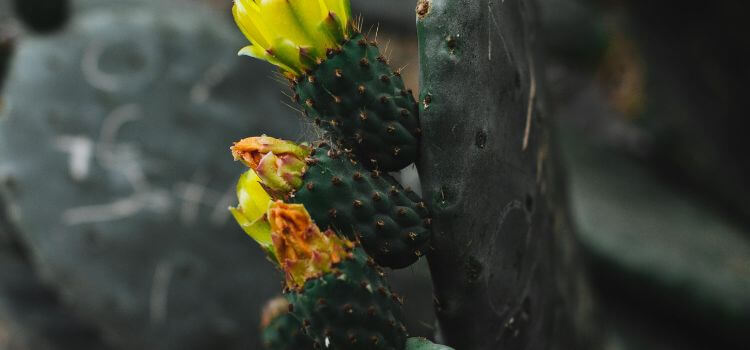
Biological Factors In Arm Development
Why do cactus grow arms? This is a question many cactus enthusiasts ask.
Arm development in cacti is not random. It comes down to two key factors: genetics and the environment. Both play a crucial role in whether a cactus will sport the iconic arms we often associate with desert landscapes.
Genetics
Just like humans, cacti inherit traits from their parents. A cactus species’ DNA holds the blueprint for arm growth. Some cacti, like the famous Saguaro, are genetically programmed to grow arms. These arms appear as the cactus matures, often after several decades of growth.
Environmental Influences
Where a cactus lives also affects its arm growth. Water, sunlight, temperature, and soil type impact a cactus’s development. Understanding these influences can help explain why not all cacti develop arms.
| Environmental Factor | Effect on Arm Development |
|---|---|
| Water | Abundant water can lead to faster growth and potential arm development. |
| Sunlight | Direct sunlight encourages arm growth in certain species. |
| Temperature | Extreme temperatures can inhibit arm growth. |
| Soil Type | Nutrient-rich soil may support the growth of arms. |
Not all cactus species are meant to grow arms. Even within arm-bearing species, not every individual will sprout them. The unique combination of genetics and environmental conditions decides the fate of a cactus’s arm development.
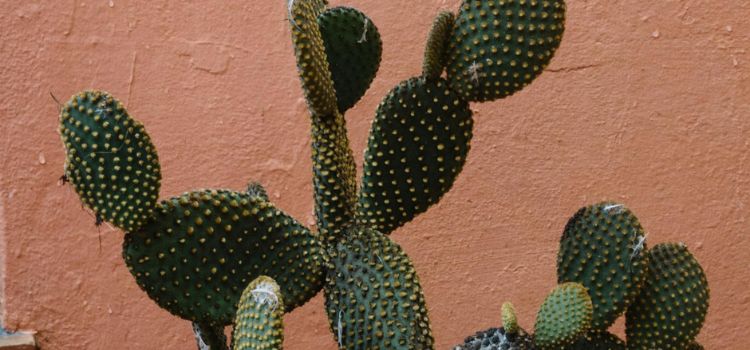
Caring For Cacti In Cultivation
Cacti are fascinating plants with diverse growth habits, including arms development. While not all cacti grow arms, this feature is often associated with mature specimens in certain species. Whether they grow arms or not, cacti need proper cultivation. This section provides valuable insights into achieving optimal growth conditions and avoiding common cultivation mistakes.
Optimal Growth Conditions
Providing the proper environment is vital to any cactus’s health and development. Cacti thrive under certain conditions that mimic their native habitats.
Table for Optimal Growth Conditions
| Condition | Details |
|---|---|
| Light | Full sun to bright, indirect light |
| Soil | Well-draining, sandy or gritty mix |
| Water | Deep but infrequent watering |
| Temperature | Warm temperatures with more excellent winter period |
| Fertilizer | Half-strength during the growing season |
Common Mistakes To Avoid
Many enthusiasts unintentionally harm their cacti by not understanding their unique needs. Avoid these pitfalls to keep cacti healthy.
- Overwatering — Roots rot quickly in soggy soil.
- Too Little Light — Cacti may stretch or discolour without enough sunlight.
- Inadequate Drainage — Always choose pots with drainage holes.
- Ignoring Pests — Treat infestations quickly to prevent spread.
- Neglecting Temperature Requirements — Respect their need for cooler winter temps.
Tailoring the care of cacti to their specific needs ensures vibrant growth and the potential development of their characteristic arms.
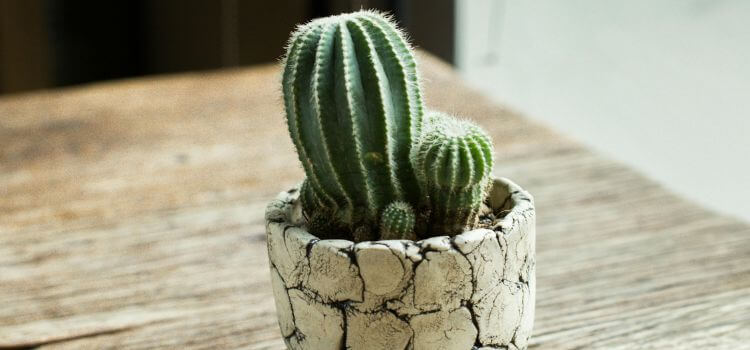
Frequently Asked Questions Of Do All Cactus Grow Arms?
Your cactus may develop skinny arms due to insufficient light, causing it to stretch toward the light source. Ensure it receives adequate sunlight.
Yes, cacti can regrow arms. Once damaged or cut, healthy cactus tissues can develop new arms over time.
Select a healthy cactus arm and twist it gently until it detaches. Allow the end to callous over for a few days. Then, plant the calloused end in well-draining soil and water sparingly to stimulate root growth.
Some saguaros lack arms due to genetics, environmental factors, or damage sustained during growth. Young saguaros may develop arms as they mature.
Conclusion
In conclusion, the growth patterns of cacti are fascinating. Not all cacti develop arms—a trait influenced by species, age, and environment. This distinctive adaptation serves various survival purposes. Celebrate armless and multi-limbed cacti that tell their stories in dry environments.

